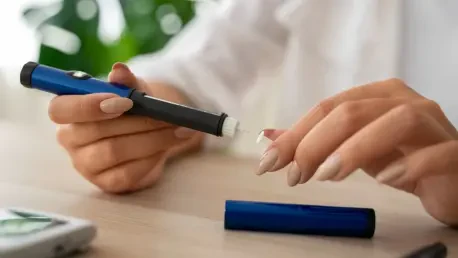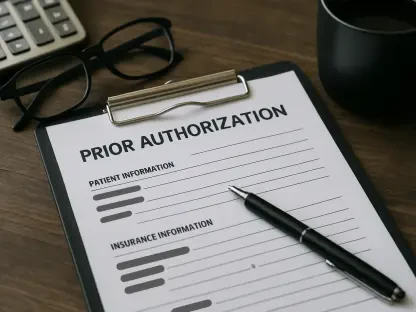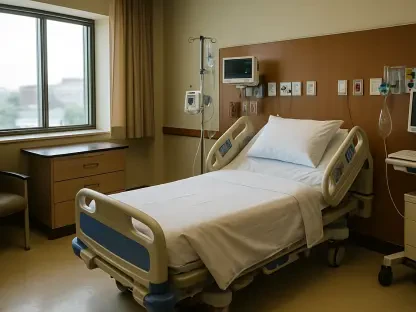As the prevalence of diabetes continues to impact more than 37 million individuals in the United States, the unique screening challenges these travelers face at airport security checkpoints have become increasingly significant. Diabetes management often includes the use of medical devices like insulin pumps and continuous glucose monitors (CGMs) as well as carrying essential supplies such as insulin. These necessary accommodations highlight the critical need for people with diabetes to understand the specific security measures they may encounter. It is essential to grasp how the Transportation Security Administration (TSA) accommodates the unique needs of this community to provide a smoother, less stressful travel experience.
Screening Procedures for Diabetes Management Devices
Navigating Security with Medical Equipment
For those managing diabetes, passing through airport security is not just a routine checkpoint; it involves navigating potential hurdles while carrying crucial medical equipment. Medical devices like insulin pumps and CGMs are essential for monitoring and managing blood sugar levels. However, these devices require special consideration as they can be sensitive to typical security screening processes, such as x-rays and full-body scanners. The electromagnetic and radiation exposures from these machines have the potential to damage or interfere with the functionality of these critical tools. Consequently, travelers may find themselves subject to additional scrutiny, which can prolong their screening experience. Recognizing these challenges, TSA has implemented protocols allowing for alternative screening methods.
Alternative Screening Techniques
TSA officers might choose hand searches, pat-downs, or visual inspections as more suitable screening alternatives for those traveling with essential medical devices. These methods are designed to prevent potential malfunctions while ensuring safety for all passengers. Instead of subjecting devices to procedures that could compromise their functionality, TSA officers specially trained to deal with medical equipment will carefully and respectfully handle such devices. The goal is to maintain a high standard of security while accommodating travelers’ health needs. These alternative screening techniques play a crucial role in minimizing disruptions for travelers with diabetes, providing a more reassuring and comfortable transition through security checkpoints.
Liquid Medication Regulations
Exceeding the 3.4-Ounce Limit
When it comes to managing diabetes during travel, carrying liquid medications like insulin in quantities exceeding the usual 3.4-ounce limit is often necessary. Recognizing this, TSA has provisions that allow passengers with diabetes to bring these essential medications in larger amounts. This accommodation is crucial, as insulin is a lifesaving medication that must be readily available for those who need it. Passengers are encouraged to declare these larger quantities of liquids to TSA officers at the beginning of the screening process. While TSA makes these exceptions, travelers should be prepared for these items to be subject to additional scrutiny.
Screening Liquid Medications
Larger liquid quantities may require additional screening to guarantee the safety and security of all travelers. TSA might conduct simple tests to detect potential hazardous materials in the liquids without causing significant delays. Understanding and preparing for these routine checks can substantially ease the anxiety of moving through security with critical medical supplies. TSA’s approach balances the urgency of passengers accessing their medication with the agency’s responsibility to maintain stringent security for everyone. Ensuring that these procedures uphold the efficiency and effectiveness of security checkpoints is vital for both TSA officers and passengers with diabetes.
Communication at Security Checkpoints
Informing TSA Officers of Medical Conditions
Effective communication plays a pivotal role in facilitating a seamless security screening process for travelers with diabetes. It is vital for passengers to inform TSA officers about their medical condition and any associated devices immediately upon arrival at the checkpoint. While not compulsory, the use of a notification card is advisable as it helps discreetly indicate the need for special considerations. This upfront communication is essential, as it aids TSA officers in understanding the specific requirements and potential challenges linked to various medical devices. By taking such proactive measures, travelers can significantly reduce the risk of misunderstandings, and the screening process can become more efficient and less invasive.
Ensuring Smooth Process Flow
Transparency and open communication with TSA personnel ensure a smoother passage through security, minimizing potential complications. Insulin pumps and other medical devices may set off metal detectors or require detailed inspection, so articulating these needs early on assists TSA in quickly accommodating these unique health requirements. If a passenger’s device triggers an alert, clearly explaining the situation can lead to a prompt resolution. TSA can then apply specific procedures tailored to these cases, reducing delays and avoiding the unnecessary investigation of the medical equipment. In this way, communication fosters a harmonious and efficient interaction between travelers and security personnel.
Balancing Security with Medical Needs
Respecting Health Challenges
The TSA’s commitment to securing all travelers while accommodating those with chronic conditions is vital to its operational ethos. Respecting the unique needs of travelers with diabetes involves balancing safety protocols alongside health considerations. The agency acknowledges that stringent security measures must also accommodate the health requirements of passengers with diabetes. Every effort is made to respect travelers’ medical needs without compromising security. This dual focus ensures that while the overarching goal is to maintain passenger safety, it is achieved by considering and incorporating the vital requirements of those managing their health conditions during travel.
Guidelines for Medication and Supplies
To ensure a smooth travel process, TSA advises travelers to keep medications in their carry-on luggage, allowing for easy access during flights. Additionally, passengers should be vigilant about prescription labeling, as variations in state regulations may impact the labeling requirements. Since different airports might have varying procedures, being aware of these potential differences can prevent unnecessary complications. Understanding these guidelines helps individuals traveling with diabetes to navigate the journey more effectively, ensuring that essential medications and devices remain accessible while complying with security regulations that safeguard the entire passenger population.
Privacy and Rights During Screening
Ensuring Comfort and Privacy
Passenger rights during the security screening process are deeply entrenched in TSA’s operational standards. It is essential for passengers, particularly those with medical needs, to feel respected and comfortable during security checks. For this purpose, pat-downs are conducted by officers of the same gender, ensuring sensitivity and respect for personal boundaries. Furthermore, if a traveler feels the need for additional privacy, they can request a private screening at any time. These rights are in place to ensure that each passenger’s dignity is upheld and that their experience is as stress-free as possible while TSA fulfills its security obligations.
Medical Device Protocols
As diabetes affects over 37 million people in the U.S., it poses considerable challenges, particularly when traveling through airport security. Patients often rely on vital medical devices such as insulin pumps and continuous glucose monitors (CGMs), along with essential supplies like insulin. This presents a unique set of demands at checkpoints, emphasizing the necessity for travelers with diabetes to be informed about the specific security protocols they’ll encounter. For those managing diabetes, understanding how the Transportation Security Administration (TSA) supports their distinctive requirements is crucial for ensuring a hassle-free travel experience. TSA has developed guidelines to better accommodate these individuals, aiming to minimize stress and streamline their passage through security. It’s vital that travelers familiarize themselves with these procedures to optimize their journey. This proactive approach not only helps travelers be prepared but also empowers them to manage their condition effectively and enjoy smoother travel experiences.









